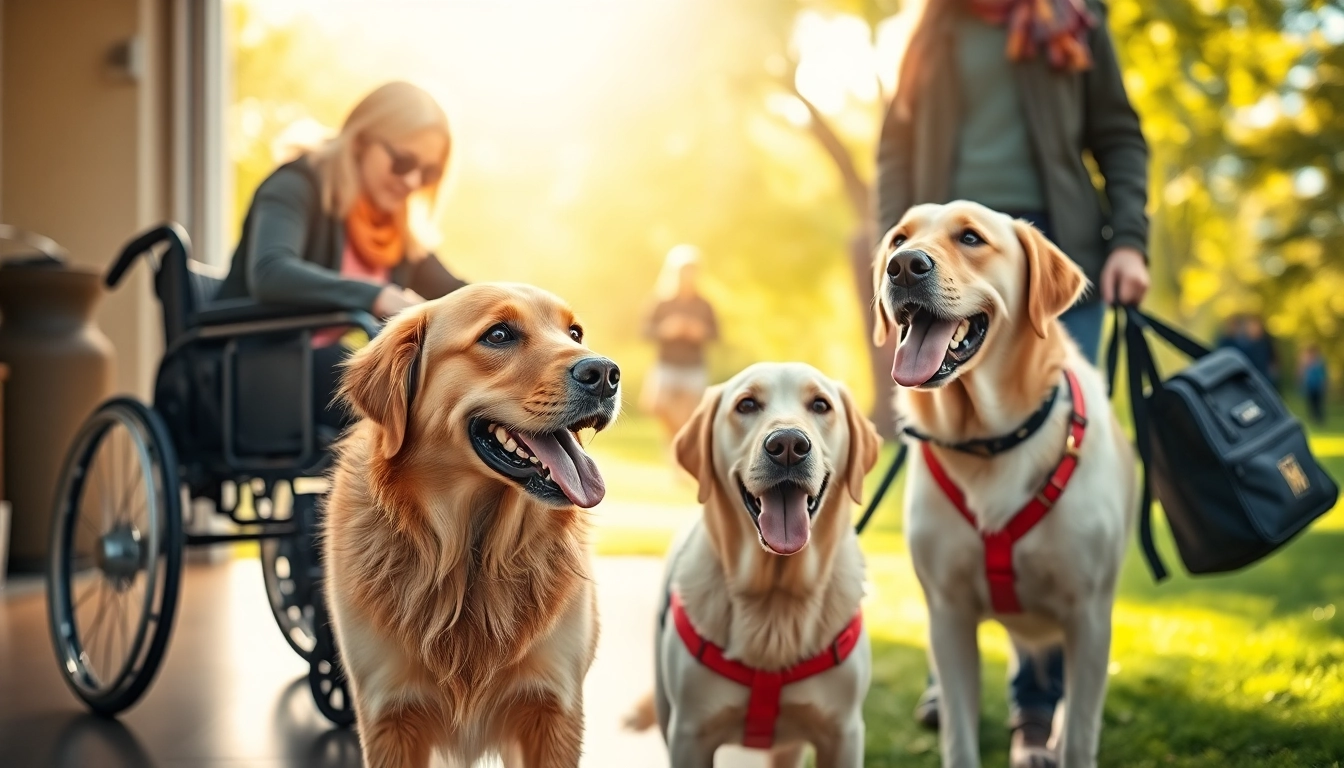Introduction
For families living with autism, daily life can present unique challenges. From sensory overloads and communication barriers to safety concerns, the world can sometimes feel overwhelming. This is where autism service dogs make an extraordinary difference. These highly trained companions go beyond being pets—they become lifelines of support, guidance, and comfort. At Service Dog School of America, the mission is to provide world-class training for autism service dogs that empower children and adults to navigate life with greater ease and independence.
What Are Autism Service Dogs?
Autism service dogs are specially trained canines that provide physical, emotional, and social support to individuals on the autism spectrum. Unlike therapy or emotional support animals, service dogs are trained to perform specific tasks tailored to their handler’s needs. For individuals with autism, these tasks may include preventing wandering, interrupting repetitive behaviors, reducing anxiety during sensory overloads, and offering consistent companionship.
Why Autism Service Dogs Matter
The bond between a person with autism and their service dog can be truly transformative. While traditional therapies focus on skill development and coping strategies, autism service dogs provide constant support in real-world scenarios. They help foster independence, reduce anxiety, and bridge social connections. Families often report that the presence of an autism service dog improves quality of life not only for the individual but for everyone in the household.
How Service Dog School of America Stands Out
Not all service dog training programs are created equal. Service Dog School of America has earned a reputation as a leader in producing reliable, well-trained autism service dogs. Their unique training methods emphasize:
- Customized Training: Every autism service dog is trained according to the specific needs of the individual and their family.
- Behavioral Expertise: Trainers specialize in positive reinforcement techniques that create obedient, calm, and responsive dogs.
- Family Integration: Training includes not just the dog but also the family, ensuring a smooth partnership.
- Lifelong Support: Graduates of the program receive ongoing resources and guidance for long-term success.
By focusing on real-life applications rather than just textbook skills, Service Dog School of America ensures that each autism service dog becomes a reliable partner in everyday living.
Tasks Performed by Autism Service Dogs
Autism service dogs can be trained to perform a wide variety of tasks depending on the individual’s needs. Some common examples include:
- Safety Assistance: Preventing children from running into unsafe areas by acting as a physical anchor.
- Calming Behavior: Applying deep pressure by lying across the handler’s lap during meltdowns to reduce stress.
- Interrupting Repetitive Behaviors: Gently nudging or pawing to help redirect focus during stimming behaviors.
- Navigational Support: Guiding through crowded or overwhelming environments.
- Sleep Support: Providing a calming presence at night to improve rest.
These tasks are not just practical but also emotionally grounding, helping individuals feel more secure in daily life.
Emotional Benefits of Autism Service Dogs
While the functional tasks are vital, the emotional benefits of autism service dogs are equally profound. Many families notice significant improvements in confidence, self-esteem, and emotional regulation. Children who once struggled with isolation often find comfort in their service dog, while adults gain a trusted companion who provides unconditional support. This companionship also helps reduce parental stress, creating a calmer home environment overall.
Autism Service Dogs and Social Interaction
For individuals with autism, social situations can be intimidating. An autism service dog acts as a social bridge, making interactions smoother and more approachable. Strangers often feel more comfortable initiating conversations when a service dog is present, which can help children and adults practice communication skills in a natural way. In schools, autism service dogs also encourage peers to engage positively, fostering inclusivity.
Safety Benefits of Autism Service Dogs
Safety is often a primary concern for families of individuals with autism, particularly for children prone to wandering. Autism service dogs are trained to prevent elopement by halting movement or guiding the individual back to a safe area. In public spaces, this provides peace of mind for parents while giving the child more freedom to explore safely.
The Training Process at Service Dog School of America
Training an autism service dog requires patience, expertise, and precision. At Service Dog School of America, the process involves:
- Assessment of Needs: Understanding the unique requirements of the individual.
- Dog Selection: Matching the right temperament and breed to the client.
- Task Training: Teaching specific skills such as tethering, calming pressure, or safety guidance.
- Public Access Training: Ensuring the dog behaves appropriately in public settings.
- Family Instruction: Training the family to effectively handle the service dog.
This holistic approach ensures that every autism service dog is not just well-trained but also seamlessly integrated into family life.
Success Stories from Families
Families who have worked with Service Dog School of America often describe their autism service dog as life-changing. Parents report fewer meltdowns, better sleep for their children, and increased independence. Adults with autism share how their service dogs help them manage anxiety in workplaces, schools, and social environments. These testimonials highlight the life-transforming potential of well-trained autism service dogs.
Why Choose Service Dog School of America
Choosing the right training program for an autism service dog is crucial. Service Dog School of America sets itself apart through:
- Decades of combined training experience.
- Proven results in real-world applications.
- A compassionate team dedicated to making a difference.
- Tailored solutions for children, teens, and adults.
Families who partner with Service Dog School of America can feel confident knowing they are receiving one of the most advanced autism service dog programs available.
Frequently Asked Questions
1. How long does it take to train an autism service dog?
Training can take anywhere from 12 to 18 months, depending on the dog and the specific tasks required. The process is thorough to ensure reliability in real-life situations.
2. Are autism service dogs only for children?
No, autism service dogs can support both children and adults. Their tasks and training are adapted to suit the age and lifestyle of the handler.
3. Can autism service dogs go everywhere with their handler?
Yes. Autism service dogs are legally recognized as service animals under the Americans with Disabilities Act (ADA). This means they are permitted in public places such as schools, restaurants, and transportation systems.
Conclusion
Autism service dogs are more than companions—they are trusted partners who bring independence, safety, and emotional stability to individuals with autism. With tailored training and a focus on real-life needs, Service Dog School of America has set the standard for excellence in preparing autism service dogs. Families who choose this path often find their lives profoundly transformed, gaining not only a service dog but also a new sense of possibility and hope. Looking for More Info? Visit Our Site to Learn Everything You Need.











Leave a Reply